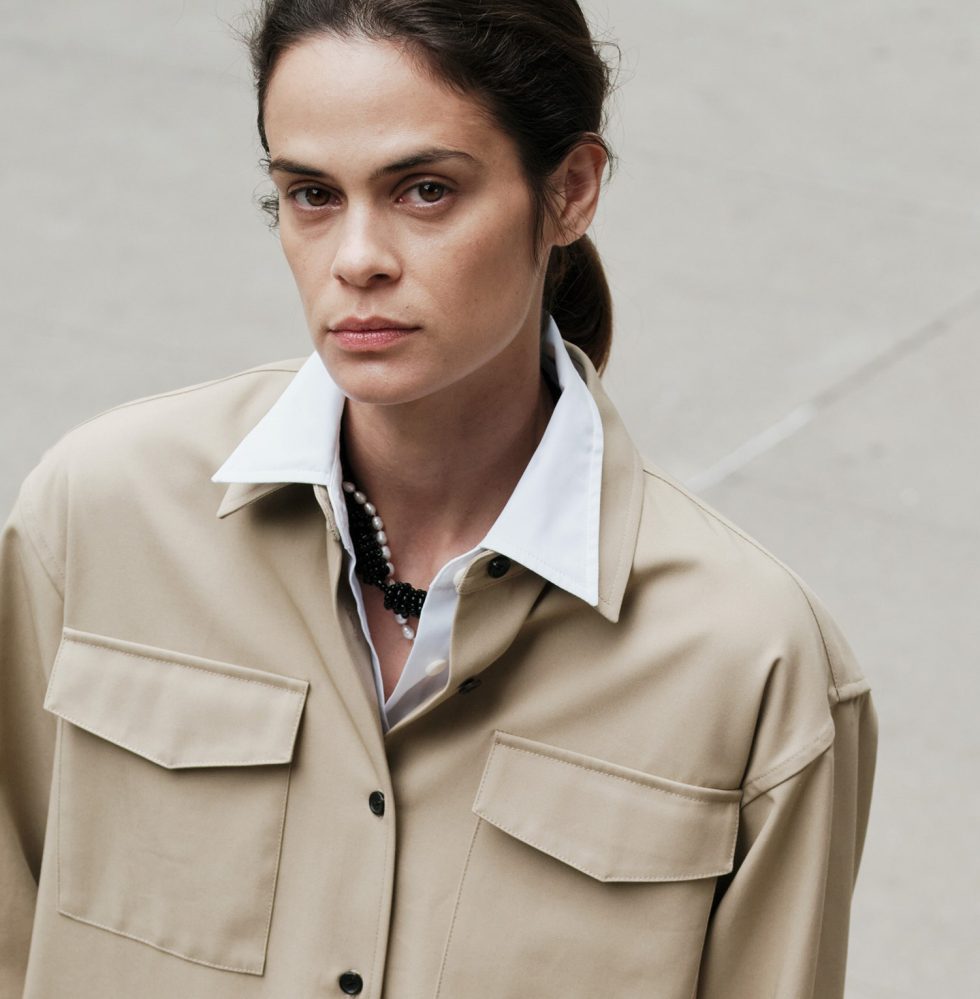
Earlier this year, Maria McManus began experimenting with lace after coming across an Irish linen tablecloth her Aunt Bibi had made. “I’m not a super floral crochet person, but I was like ‘OK, this is meaningful,’” she said at the time, and three seasons later, it’s been a thrill to see how that discovery begat a round of experimentation and pushing of the creative boundaries for the designer.
“I think it allowed me to think about sustainability differently, not being like, ‘Oh my God, it has to be recycled,’ but that there can be more things to the story.” she explained during an appointment at her Tribeca home which often doubles as a showroom. Artisanal French Dentelle de Calais-Caudry lace, which is “certified and protected by the French government” continued to play a starring role in her resort collection, trimming slinky slip dresses made from her favorite Naia Renew fabric, and in delicate floral-patterned skirts. But its influence could also be felt elsewhere, as in the light-as-air cardigan knitted with three different floral patterns inspired by the lace itself, or even in the pair of organic cotton jeans with a “shredded” detail on the waistband and pockets. They were still beautifully finished, and lined in her trademark grosgrain ribbon, but the layers had been left unfinished, fraying—a kind of proof of the handwork that goes into actually making them.
But that doesn’t mean McManus has stopped her tireless search for new materials and new sustainable technologies. This season she introduced a recycled polyester curly “shearling,” used on a very cool—and glamorous—long statement coat; and a biodegradable nylon with a scuba-like feel that became extra-long leggings turned-wardrobe-essential thanks to the addition of belt loops(!). “Most nylon comes from the fossil fuel industry—specifically coal—and can take anywhere from a hundred to a thousand years if not longer to biodegrade,” she explained. “This is made from a fruit polymer, so it reacts more like a paper or a cotton, and will biodegrade in five years in an industrial landfill. The mill was started by this woman named Regina and she is amazing, everything she does is sustainable in some way.”



